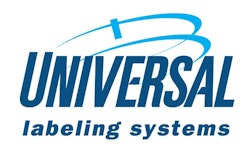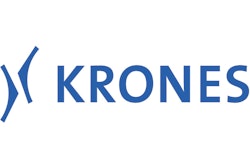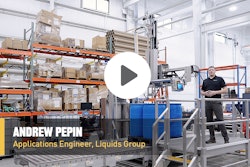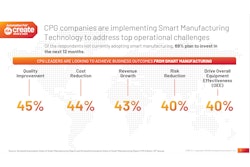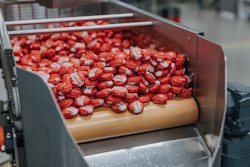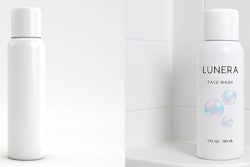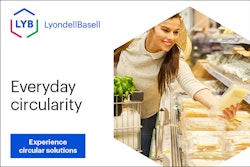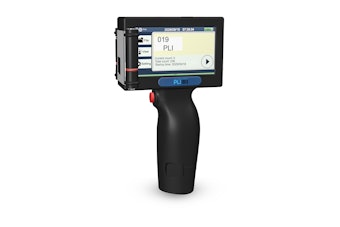Golden State Vintners of Napa, CA, bottles and sells wine under its own Edgewood and Weston brands. But the firm’s real goal is to become “the leader in outsourcing solutions for the wine industry worldwide.” The only way to achieve such a goal is to make sure that sufficient bottling and packaging capacity is in place when customers come calling. That’s why the firm just added a new bottling line in a newly opened facility in American Canyon, CA.
Flexibility, of course, is crucial when the majority of your business is contract packaging. Two machines in particular help give GSV’s new line the flexibility it needs. First is a capsule applicator from Robino Galandrino, represented in the United States by fp Packaging (Napa, CA). It can apply any one of the three varieties of capsules used commonly today: polyvinyl chloride for inexpensive wines, a film/foil lamination for mid-priced varieties, and a tin capsule for high-end wines. The PVC capsule is a heat-shrink option while the other two are spun on.
Also versatile is the labeler, from Cavagnino & Gatti, another Italian firm represented in the United States by fp Packaging. “It can handle pressure-sensitive and cold-glue-applied labels,” says general manager Michael Blom. “And it can apply front, back, and neck labels. All three can be cold glue or pressure-sensitive.”
Glass bottles in both 750-mL and 1.5-L sizes are filled on the line. Changing from one to the other takes about 90 minutes, says Blom.
Rated speed is 200 bottles/min when the smaller bottle is in production. On the day Packaging World visited, 1.5-L bottles were filled at about 100/min.
Uncasing by hand
Uncasing, for now, is done by hand. Bottles are conveyed into a monobloc rinser/filler/corker supplied by Bertolaso, also represented by fp Packaging. All three units in the monobloc system are enclosed in a HEPA-filtered room that keeps contamination to a minimum in the crucial place where wine meets bottle. “We’re certainly not the first to go to such lengths, but this approach does represent the latest thinking in the field,” says Blom.
Rinsing by the 28-head rinser includes a burst of sterile air to blow out any case dust the bottles may contain. The air nozzle is 10 mm in dia while the bottle’s neck finish is 18. So any particles or dust to be blown out of the bottle has room to fall out and into a collection tray. Then the bottles are purged with nitrogen to reduce oxygen levels.
Next is the 48-valve filler, which determines how fast everything else in the line needs to run. Downstream sensors constantly detect bottle population provided by the filler and signal downstream machines to speed up or slow down accordingly. Ryan Packaging Solutions (Napa, CA) helped with line integration.
Corking is next, and here again, GSV employs the very latest technology.
“Traditionally, you feed corks to a hopper mounted right over the corker,” says Blom. “From the hopper the corks drop down and are inserted into the bottle. But here there is no cork hopper above the corker. Instead, corks are pulled from a hopper that’s outside the HEPA filtered filling chamber. The corks move through a pneumatic tube that delivers them to the corker and, subsequently, the bottle with a lot less cork dust and much better control overall.”
Emerging from the filler enclosure, bottles are conveyed through a Heuft (Downers Grove, IL) detection unit that uses a combination of photocells and high-frequency signals to check for cork presence, cork breakage, and improper fill height. Any bottle found wanting in any of these three is automatically rejected a short while later.
Versatile capsule applicator
A right angle turn brings bottles next to the capsule applicator. “It’s a bit unusual for one machine to do all three capsule varieties,” says Blom. “Ordinarily you’d need one machine for heat-shrink PVC and a second for capsules that are spun on.”
On the day of PW’s visit, heat-shrink PVC capsules were being applied. These arrive nested in long rolls or slugs. An operator feeds the slugs into a device that feeds one slug after another to a second device that mechanically picks individual capsules from the slug and places them in cups mounted on a third device, one that rotates above the flow of bottles. Each capsule-holding cup uses a burst of compressed air to place a capsule on a bottle as the bottles move through. As soon as the capsule is on, the bottle is conveyed through a feed screw/star wheel combination onto one of six platforms on the rotary heat-shrink station. A heat unit comes down over the bottle to shrink the capsule on tight. Should either of the other capsule styles be in production, the heat shrink system is bypassed and the bottle moves through a rotary station that spins the film/foil capsules or the tin capsules onto the bottle necks.
Exiting the capsule applicator, bottles move into the Cavagnino & Gatti labeler. Blom is pleased with the machine’s versatility.
“Pressure-sensitive labels are appealing because they’re easy to change, and as a contract packager, we change over a lot,” says Blom. But if a customer prefers cold-glue-applied labels—front, back, or neck—the machine stands ready to comply.
A short distance from the labeler is a laser coder from Linx (Cambridgeshire, England) that marks each bottle with date and lot code.
“A lot of our bottles go to Europe, where an indelible mark is required,” says Blom. “The laser coder delivers just that. Laser also involves the least hassle in terms of consumables and clean-up.”
Next in line is a Model Flex 835 case packer from Hartness (Greenville, SC). It’s preceded by a Hartness three-lane infeed section that relies on sensors to signal a gating device which lanes are in need of bottles. The gating device then swings from lane to lane accordingly.
Gentle handling
Blom appreciates the gentle handling characteristics of the case packer. “It’s a drop packer that uses a shuttle system we really like,” says Blom.
Inflatable bags are part of this shuttle operation. Each time the shuttle carriage strokes back for a fresh load of bottles, the inflatable bags are positioned between the bottles. The bags inflate so that bottle necks are captured as the inflated bags expand. The shuttle then strokes forward to the drop station where bags deflate and the bottles drop into a waiting case.
“In addition to the relatively gentle handling the inflated bag system provides, the other thing we like is that it separates the infeed lanes, where the buildup of back pressure can otherwise be a problem. It means better control of the bottles at the point they need to be dropped, and thus less chance of a bottle falling over.”
GSV packs 750-mL bottles not only in traditional 24-count cases but in 12-count cases as well, a format popular in Europe, says Blom. The 1.5-L bottles are always packed 12 per case.
An Elliott (Fresno, CA) case sealer glues cases shut. Cases are then conveyed past a Model 5200 hot melt ink-jet coder from Markem (Keene, NH). In place of liquid inks, it’s fed solid inks in blocks that melt as needed and dry quickly on the case. Blom says cleanup and routine maintenance are appealingly simple. “You press a button and a self-cleaning cycle runs automatically,” he says. “And it costs about the same as a more conventional ink-jet unit.”
The system described here, which represents an investment of about $2.5 million dollars, has been up and running for nearly a year. Now, says Blom, it’s on to Phase Two: an automatic uncaser and palletizer from ABC Packaging (TarponSprings, FL), a Krones Kettner bulk depalletizer from Krones (Franklin, WI), and a stretch wrapper from Lantech (Louisville, KY).




















